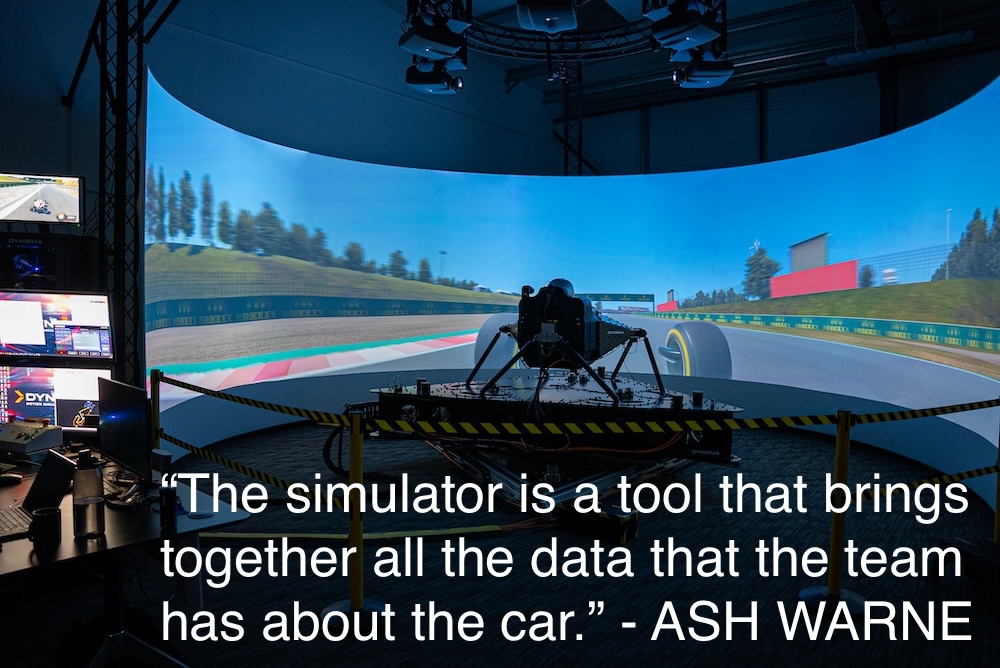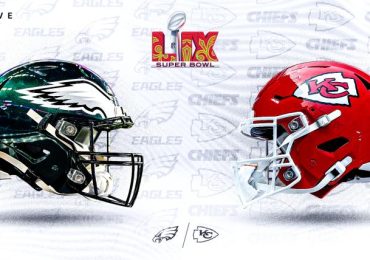Last summer, a tweet from NASCAR driver Landon Cassill shed some light on how simulation lays the groundwork for what happens in the real world. It was something we covered here at RACER at the time, but with simulation being such a major part of motorsports today — particularly in Formula 1, where a car may change entirely from race to race — we wanted to delve even deeper.
To do that, I headed to Bristol in the UK, where Dynisma Limited is based. Dynisma is the class leader in simulation technology, with Scuderia Ferrari among its clients.
It was founded in 2017 by former McLaren and Ferrari F1 simulation lead Ash Warne, and in an era where real-world testing is confined to a few days a year, the company provides a vital service.
“It’s the main tool now to be able to allow them to develop the cars, and automotive companies are doing the same,” Warne tells RACER. “They want to make fewer prototypes. They want to be able to go straight to the production line without having to spend time and money building mule cars, building prototypes.”
Dynisma aims to blur the lines between virtual and reality by developing the most accurate simulation technology around.
“Simulators have been around for a while, but what we’ve got is a step change in the technology that allows drivers to feel the movement of the thing that we’re simulating and how that’s moving more accurately,” Warne says.
That’s been done by reducing the latency — the delay between what a driver inputs and what they experience. It’s been simulation’s key weakness in the past.
“Our first major contribution is about latency, and we’ve got that latency down to less than five milliseconds, which is basically imperceptible,” Warne says. “Typically, with other simulators, you can’t drive them the same way as you can drive our simulator, because you have to put in more understanding to deal with the latency. So that’s kind of critical.
“If you’re suddenly increasing the human reaction time by 25, 50 percent then — especially in the context of an elite athlete — this vehicle is going to completely wreck the simulation.
“In a simulator where the latency is too high, what basically happens is the driver gets frustrated because they’re saying, ‘Well, I can’t get around a lap. I would be able to drive this on the track, but I can’t drive it here. So I’m going to take out two turns of front wing to make the car more stable. I’m going to put a softer rear bar on to give me more grip, to make the car more stable.’ So now all of a sudden, you’ve got the wrong baseline. You’re not carrying out the experiments you wanted to.”
 Dynisma’s Warne explains to Wilde how the system lets drivers feel as well as see how their sim efforts are going.
Dynisma’s Warne explains to Wilde how the system lets drivers feel as well as see how their sim efforts are going.
Couple that vastly improved latency with motion technology unlike any other, and Dynisma’s simulators can give drivers the sort of seat time that almost mirrors the real world.
“Fundamentally, our Motion Generator technology allows the driver to feel the car in a way that other simulators don’t,” Warne says. “That means the driver is able to drive the simulator in the same way as they are the real car.
“If you imagine the recent world champions and everybody on the current F1 grid and F2, F3, all of those drivers have typically been driving cars or karts of some description since they were really, really young, and they learned to be at one with those machines. They’re connected to them directly, and they feel every little movement, every vibration that’s going on in that car. And even if they can’t describe how they’re responding to it, they have learned to respond to all of those stimuli.
“They hear it, but they also feel it. So the driver really feels the feedback from the motion system in two ways. One is through touch; a bit of pressure or vibrations they’re feeling through their backside, and then the other is through the vestibular system – these are the organs in your inner ear that help you balance, but they also help you detect movement.”
 Dynisma’s technology means that simulation is at a near-perfect level, to the point where it serves as the intermediary between two physical elements: the wind tunnel and the track itself.
Dynisma’s technology means that simulation is at a near-perfect level, to the point where it serves as the intermediary between two physical elements: the wind tunnel and the track itself.
Results from developments prototyped with scale models are replicated in the simulator to validate them before the car hits the track. Once it does, the real world performance is back-to-backed with the expectations from the sim to correlate the data, ensuring that all lines up as expected.
“Basically, the wind tunnel is only ever an approximation,” Warne says. “So the simulator is a tool that brings together all the data that the team has about the car and allows the driver to drive it and to do experiments on what’s coming up next, or look forward to next year.
“But it can only ever be as correct as the data that’s put into it, and that’s why teams will have tens of people in the aerodynamics department, tens of people in vehicle dynamics departments and vehicle modeling, and a big part of their role is to understand the physics of the car, understand how it behaves, and in part, to be able to put that in the simulator.”









